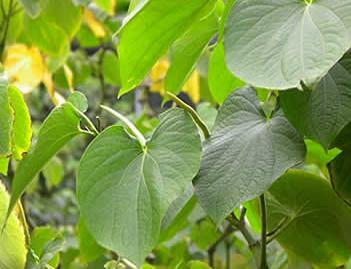Products
Contact us
- Changsha Herbal Ingredient Co.,Ltd
- Tel: 0086-731-88250818
- Add:No.56,Zhanxing Rd,Changsha,China,410205.
 sales@herbal-ingredient.com
sales@herbal-ingredient.com CHI-extracts
CHI-extracts

Kava Extract
Latin Name:Piper methysticum
Active Ingredient:Kavalactones
CAS No:9000-38-8
Specification:30%Kavalactones By HPLC
MOQ:1kg
Lead Time:Within 7days after confirming order
Kava extract comes from the root of the Piper methysticum shrub. This plant, part of the pepper family, is native to islands in the South Pacific.
Specifications: 30% Kavalactones Test by HPLC
History:
A member of the pepper family, kava (or kava-kava) is a natural tranquilizer that soothes jangled nerves and eases anxiety with few of the mind-dulling effects of prescription relaxants. Its Latin name, Piper methysticum, means "intoxicating pepper," and indeed, on the South Pacific islands where it is grown, kava is made into a traditional beverage that is drunk at ceremonies and on social occasions--as alcohol is in other societies--to relax people and induce a sense of well-being.
Doctors in Europe have long prescribed kava as a gentle alternative to prescription tranquilizers. But things are changing quickly. Recent news about kava has not been good. In Europe, approximately 40 reports of liver damage among kava users have surfaced over the past two years. Six of these people required liver transplants, and the three died. This was sufficient evidence for the governments of Germany and Switzerland to call for an immediate ban on kava products; Canada and Great Britain shortly followed suit.
In Europe, herbal therapies are carefully monitored by governmental agencies comparable to the Food and Drug Administration (FDA). This situation is quite different in the United States. Here, most herbs can be taken without physician supervision, and problems may never get reported at all. Because the FDA classifies kava as a nutritional supplement rather than a drug, the agency can't act on "adverse event" reports from physicians by recalling it. Rather the FDA simply issues a "warning," which it has done in the case of kava.
The lack of medical supervision regarding herbal therapies is currently reflected in the U.S. data on kava, with only a single case reported so far:a woman who developed liver failure while using the herb. Given the widespread use of kava, it is statistically quite likely that more people had or even still have kava-induced liver toxicity but remain unaware of it. When abnormalities in liver function do occur with kava, they usually clear up within weeks of discontinuing the herb.
Herbalists in the United States seem to be divided equally about the use of kava. One group recommends no official withdrawal of the herb, but carefully considered use instead. Cautions would include taking the herb for no more than one month, not exceeding dosage recommendations, and avoiding it altogether if there is pre-existing liver disease or if drinking alcohol or taking any medication associated with liver toxicity. They contend that combining kava, acetaminophen(Tylenol), and alcohol would be an extremely dangerous mix, for example. Other herbalists are willing to abandon kava altogether and recommend alternative relaxing herbs such as valerian, passionflower, chamomile, and the amino acid GABA (gamma aminobutyric acid).
Benefits:
Kava is a tall shrub in the pepper family that grows in the South Pacific islands. It has been used there for thousands of years as a folk remedy and as a social and ceremonial beverage.
The part of the plant used medicinally is the root. Although the root was traditionally chewed or made into a beverage, kava is now available in capsule, tablet, beverage, tea, and liquid extract forms.
1.Anxiety
2.Insomnia
Because kava can cause sedation, and intoxication in high amounts, kava drinks are consumed in some parts of the world in much the same way as alcohol.
Dosage Information:
1.Buy kava extracts standardized to contain at least 30% of the herb's primary active ingredient, kavalactones.
2.Look for products extracted from the root of the plant rather than kava with only purified kavalactones (some herbalists believe that the root extracts contain other beneficial substances in addition to kavalactones).
3.Use only products made solely from kava root. And avoid products that contain any other parts of the kava plant--leaves, stem, and so on. Manufacturers of kava products believe liver toxicity occurred because either the whole plant was used (the aboveground parts are toxic) or because of chemicals added to the root during processing.
For the ailments mentioned: Take 250 mg of a standardized extract two or three times a day.
Be sure to check our our Dosage Recommendations Chart for Kava, which lists therapeutic dosages for specific ailments at a glance.




